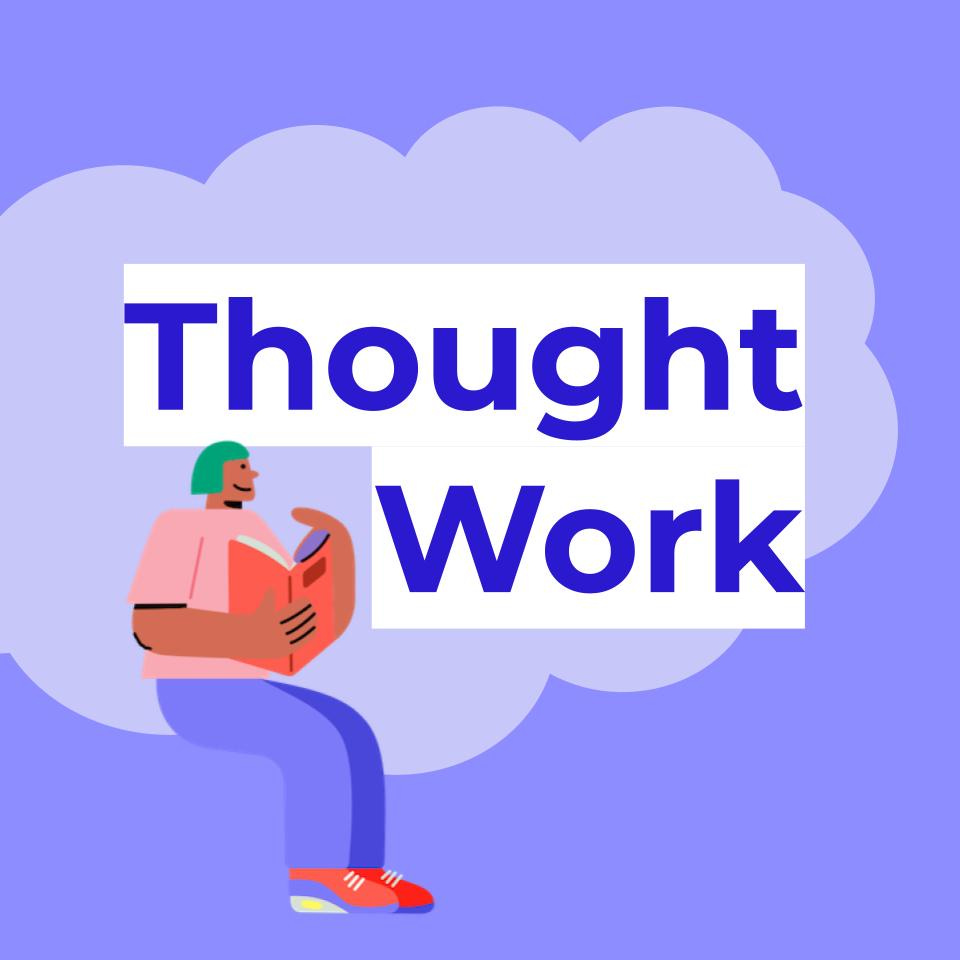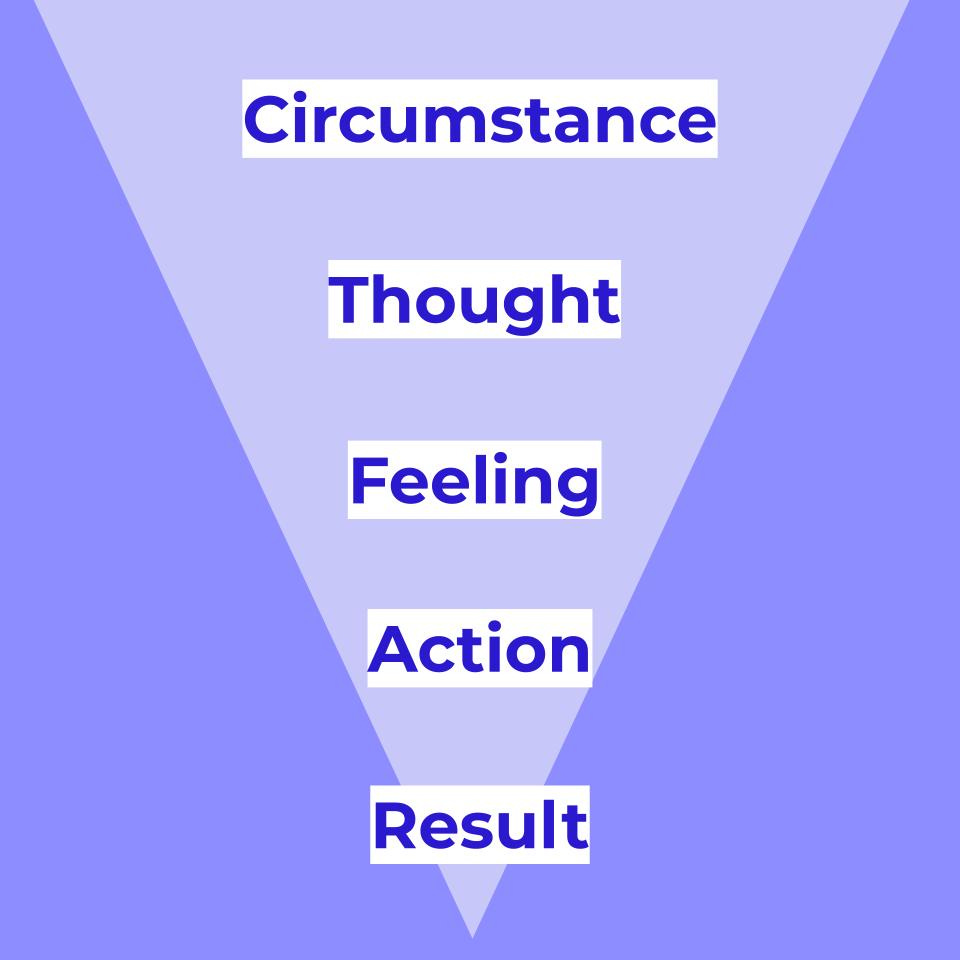The term ‘mindfulness’ gets thrown around often nowadays, it’s almost become meaningless. I’ve downloaded apps like Calm or Headspace in the past, but they would just sit on my phone unused, taunting me about the fact I wasn’t doing ‘mindfulness’. Then through the work of Maisie Hill I was introduced to the concept of Thought Work. It’s a tool to bring awareness to your thoughts, feelings and behaviours. Mindfulness in a nutshell, but I’ve found it much easier to understand and use than the abstract ‘mindfulness’.
What is Thought Work?
It’s a journalling technique that follows the below structure.
Circumstance: Factual description of what has happened (this shouldn’t include any emotion and should almost read like a piece of evidence that could hold up in court)
Thought: The sentence in your mind that you have about the circumstance
Feeling: A 1 word descriptor of the feeling you experience as a result of the above thought
Actions: All the things you do or avoid doing because of the above thought and feeling
Result: The outcome or situation that you create in your life as a result of your thought, feeling and actions.
Many people think that our lives are driven by the circumstances we face, but the thought work concept argues that it’s our thoughts about these circumstances that actually run the show. Take these 2 examples.
Circumstance: Friend hasn’t replied to my message
Thought: They hate me
Feeling: Hurt
Actions: Think of all of the many reasons my friend could hate me, go into a spiral of negative self-thought, convince myself my friend does hate me, doom scroll on social media, comfort eat to make myself feel better, get completely sidetracked from what I was doing.
Result: Convince myself everyone hates me
If we switch our thinking about the circumstance, we can alter our experience.
Circumstance: Friend hasn’t replied to my message
Thought: there are so many explanations for this, almost all of which have absolutely nothing to do with me
Feeling: Calm
Actions: Stay focussed on what I was doing, don’t spend any more time thinking about it, continue with my day
Result: Don’t make it mean anything about me
So it’s not the fact that your friend hasn’t replied to your message that’s making you feel bad, it’s your thoughts about it. Noticing your thoughts and switching unintentional thoughts out for intentional ones can drastically change our feelings and behaviours.
How and when do you use it?
Although thought work is powerful, it can be tricky to start implementing. We live such fast-paced lives where thousands of thoughts race through our heads at lightning speed. Often, our thoughts are so fleeting we aren’t even conscious of them. It takes a concerted effort to notice your thoughts in order to use this technique. I found the best route into my thoughts to be through my feelings.
During the course of my day, a small grey cloud would sometimes float over my brain which would make me feel heavy and colour everything in a negative light. My old reaction would be to distract myself, maybe I would dive further into my work, pick up my phone and go on social media, or go get a sugary snack.
Then I tried a new technique. I stopped when I noticed the feeling of the grey cloud overhead and I asked myself where the cloud had come from. If I took a minute to try, I could easily trace the source of the feeling. Ooooooh it’s because I saw that person I used to be friends with has done that thing that I’ve wanted to do for ages but haven’t got around to and now I feel shit about myself and like I’m not capable of anything. Cool.
This is when I would get out my notebook and use the thought work technique.
Circumstance: Friend has done that thing I’ve wanted to do for ages
Thought: Why am I so lazy and shit at life?
Feeling: Useless
Actions: Think of all of the reasons why I am useless, think of all the things I want to do but haven’t done, convince myself I am never going to achieve anything, feel jealous, lose all motivation and take no action.
Result: Convince myself that I am lazy and shit at life
Noticing how my thoughts about the circumstance were not helpful, I would find a thought that led to a more positive feeling and outcome.
Circumstance: Friend has done that thing I’ve wanted to do for ages
Thought: This is inspiration for me to take action
Feeling: Motivated
Actions: Think about what action I can take, make plans to do the thing
Result: Feel more inspired to do the thing
Can you see how this is a powerful tool to prevent one shitty thought from throwing you off of your whole day?
When thought work isn’t enough.
Like anything, thought work has its limitations. You shouldn’t use thought work as a tool to aid toxic positivity and to erase any negative thoughts or anger. You shouldn't use thought work to keep you stuck in unhealthy situations, like an unhappy relationship or job. In those instances, it’s the circumstance that needs to change, not your thoughts.
When thought work is used in the right situations, it can help you feel a sense of self-responsibility and control over your life. It’s empowering to know that our experiences aren’t solely dictated by the circumstances we face, but how we think about these circumstances has a huge impact on the outcome.
So, the next time a small grey cloud floats overhead, instead of distracting yourself as a fierce storm starts to brew in your peripheral, try to stop, catch the cloud, pull it onto your page and dissolve it with thought work.
If you enjoyed this post you might like







